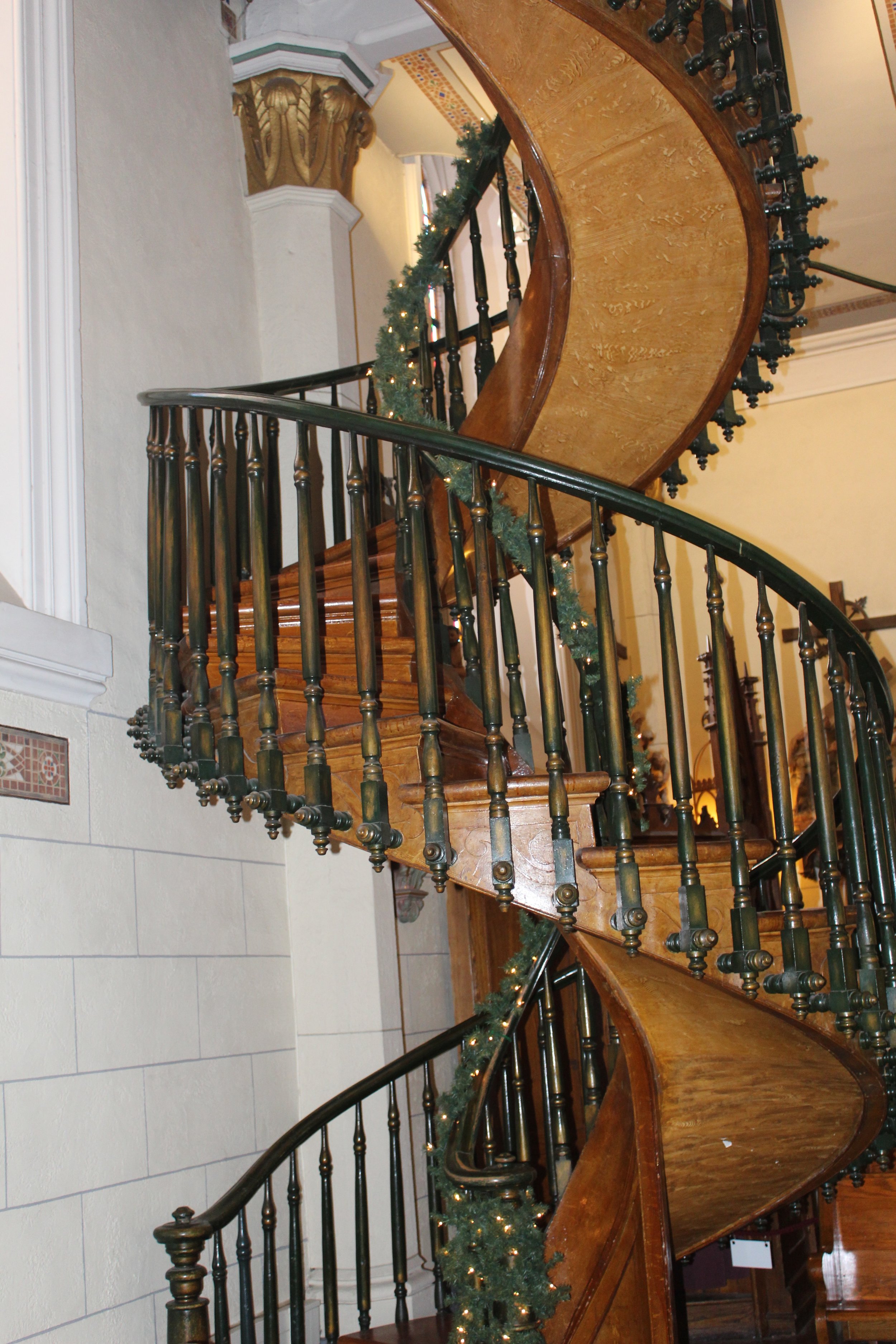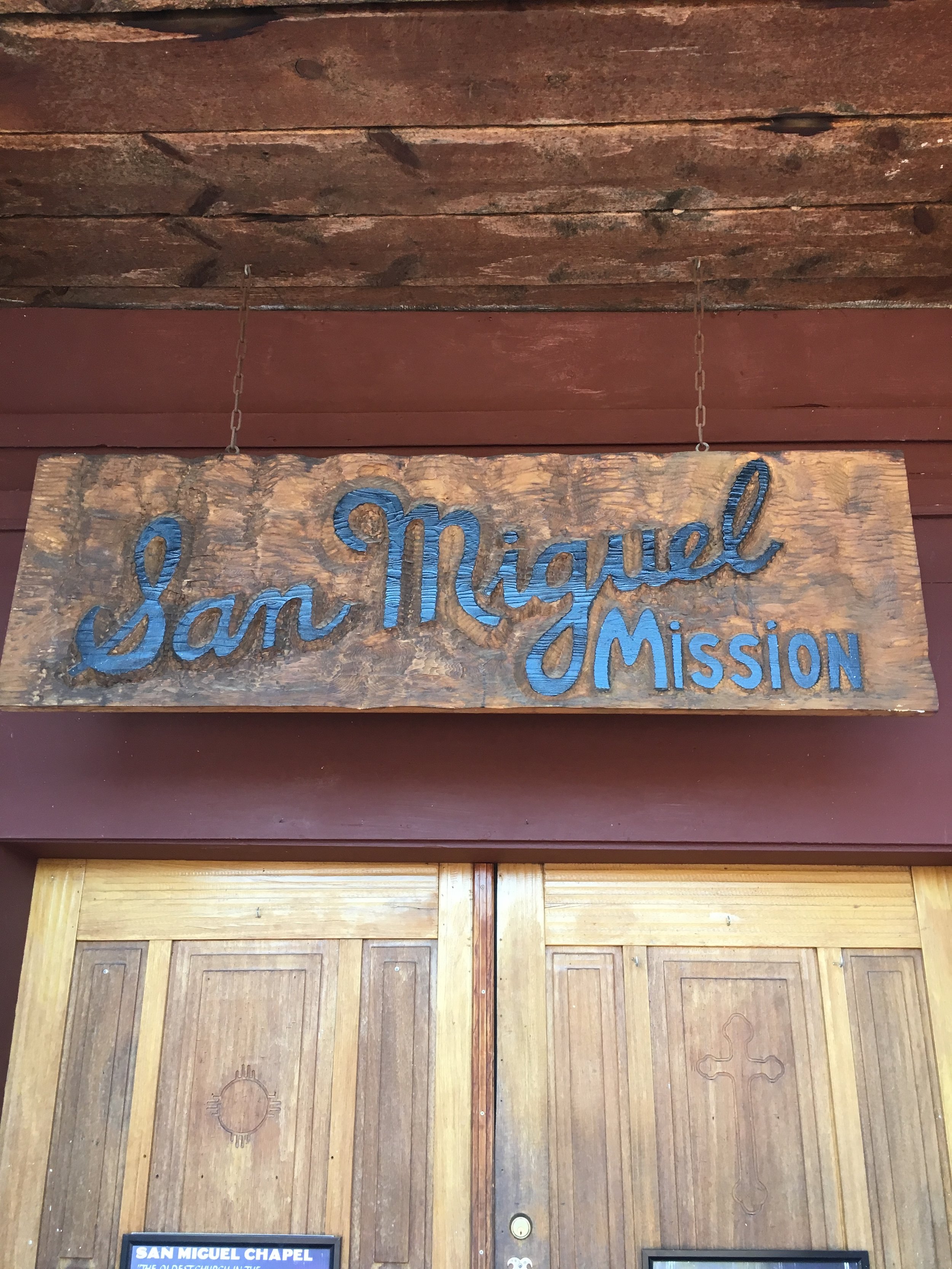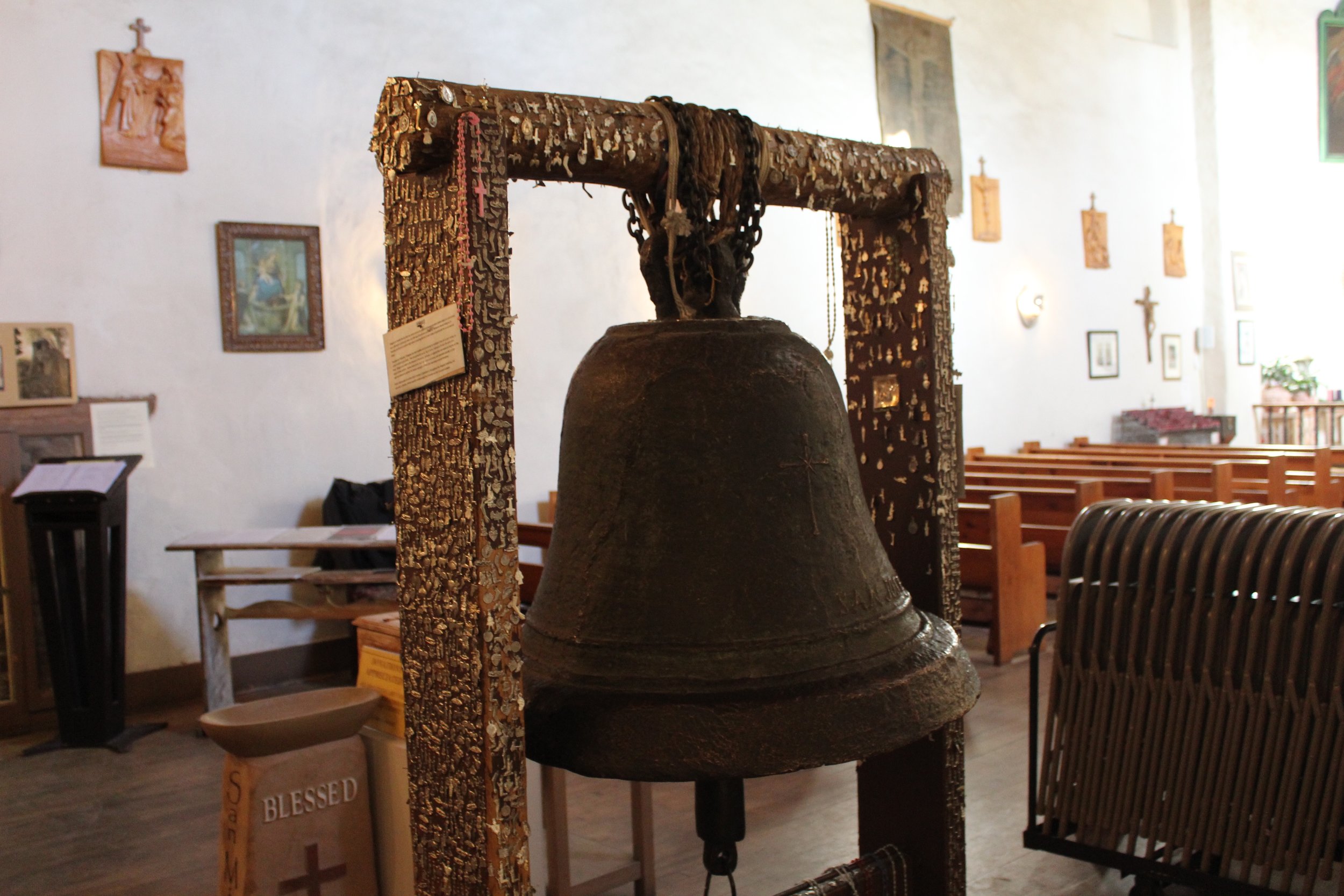Santa Fe in a Day
December 20, 2018: With a week of tax training under our belts and some free time before we venture north to Ohio for the Christmas Holidays, we decided to get out and visit the Capital City of New Mexico. I thought about testing everyone on what the capital of New Mexico is, but I decided against it. Not everyone listened with both ears in school when they were younger. It’s ok, I’m not ashamed to admit that I had to ask Betsy what the capital was when we first got here. New Mexico is another example that the largest city in a state is not always the capital. A lot of people still think that Philadelphia is the capital of Pennsylvania, but having grown up in the Harrisburg area this always upset me a little bit. Ok, Philadelphia was once our nation’s capital, but was never the capital of Pennsylvania!
So for us it was off to Santa Fe, NM for a day of exploring. Santa Fe is the fourth-largest city in the state of New Mexico and has approximately 70,000 residents. In Spanish, Santa Fe means “Holy Faith”, which may have something to do with the number of churches in the city, and may be why we spent most of our day exploring some of those churches. The city's full name when it was founded in 1610 was La Villa Real de la Santa Fe de San Francisco de Asís ("The Royal Town of the Holy Faith of Saint Francis of Assisi”). And it’s a good thing they shortened the name since that would be difficult to fit on today’s modern road signs and would also be quite the tongue twister! Even though our current home in Albuquerque is approximately 5,000 feet above sea level, it would require some climbing in our car to reach the altitude of 7,200 feet, which is where the city of Santa Fe sits. This elevation does put Santa Fe at the top of the record books as the highest capital city in the United Sates. Sitting roughly two thousand feet higher than the mile high city of Denver, Colorado whose state capital building sits at exactly one mile or 5,280 feet.
The Spanish originally laid out the city of Santa Fe according to the "Laws of the Indies", town planning rules and ordinances which had been established in 1573 by King Philip II. The fundamental principle was that the town be laid out around a central plaza. On its north side was the Palace of the Governors, while on the east was the church that later became the Cathedral Basilica of Saint Francis of Assisi. An important style implemented in planning the city was the radiating grid of streets centering from the central Plaza. As the city grew throughout the 19th century, the building styles evolved too, so that by statehood in 1912, the eclectic nature of the buildings caused it to look like "Anywhere USA”. The city government realized that the economic decline, which had started more than twenty years before with the railway moving west and the federal government closing down Fort Marcy, might be reversed by the promotion of tourism. To achieve that goal, the city created the idea of imposing a unified building style – the Spanish Pueblo Revival look, which was based on work done restoring the Palace of the Governors. State
By an ordinance passed in 1957, new and rebuilt buildings, especially those in designated historic districts, must exhibit a Spanish Territorial or Pueblo style of architecture, with flat roofs and other features suggestive of the area's traditional adobe construction. However, many contemporary houses in the city are built from lumber, concrete blocks, and other common building materials, but with stucco surfaces reflecting the historic style.
The morning was sunny and cool as we began our journey north. Instead of taking the generic Interstate 25, we instead chose the more scenic State Highway 14, better known as the Turquoise Trail. Named for the rich turquoise deposits found throughout the area, this byway carves through wild rock outcroppings, piñon and juniper-dotted hills, and a couple of delightfully quirky towns, such as Cerillos, San Antonio (No, not the one with the Riverwalk!), Tijeras and Madrid (Nope, not Spain!). The trip is perfect for a one-way jaunt between the two cities, and the 52-mile byway takes only a bit longer to drive than the Interstate highway taken by most travelers. It certainly seemed like we were going up hill most of the trip because, well, we were. As I mentioned earlier there is about a 2,200 foot elevation difference between the two cities. When we exited the interstate highway, we passed through a typical-looking, modern commercial strip before heading “downtown” where the Central Plaza and historic area resides. Since our visit was less than a week before Christmas, the trees in the Central Plaza were decorated with Christmas lights and most of the buildings were showing their festive best. We parked on a street directly on the Central Plaza and began exploring on foot.
The businesses surrounding the Plaza were a mix of art galleries, jewelry stores, restaurants, bars, and an occasional souvenir shop. We did some window shopping from the sidewalk, but were mostly enjoying the sun, the views and the company. A stop at the official visitors center was our first destination, where we gathered some brochures and personal recommendations from the gentleman on duty. As we try to do in most cities we visit, we attempt to learn the “lay of the land” by hopping on some sort of bus (free is better!) and taking a ride around. Well, it just so happens that Santa Fe has a free shuttle that runs a loop around the city with stops at some the larger attractions. We hopped on the empty bus and surprised the driver a little bit when told him we didn’t really have a destination. Our goal was to ride the loop he drove and get dropped off back at the Central Plaza where we got on! He was more than happy to oblige, and it turned out we had the bus to ourselves the entire trip.
As morning turned to afternoon, the subject of food crept into our minds. As always, Betsy had already done some preliminary research on the Find Me GF app, so she had a couple of good options available. We agreed on Cafe Pasqual’s, named for the folk saint of Mexican and New Mexican kitchens and cooks, San Pasqual. Directly from their website, “Our historic pueblo-style adobe is located one block southwest of the plaza, in the heart of downtown Santa Fe. Our festive dining room is lined with hand-painted Mexican tiles and murals by the renowned Mexican painter Leovigildo Martinez, depicting the moon reveling at her fiesta.” On this day the 50 seat dining room had lots of friends but we were able to walk in and get seated immediately. The menu had several gluten free options and for my gluten eating wife, the choices were numerous. I settled on: TWO POACHED EGGS ON AVOCADO TOAST which contained seed luscious gluten free toast, guacamole, turkey bacon, home fries, and a sprinkle of dukkah seeds. While Betsy went with: GRIDDLED MASCARPONE POLENTA which was made up of green chile-flecked sautéed polenta, red chile sauce, chorizo, roasted corn, and topped with scrambled eggs. Neither of us were disappointed with our choices and both agreed that there were several other things on the menu that intrigued us.
With our bellies full and our hunger satisfied, it was time to walk off some of those calories. Our first stop was The Loretto Chapel. Construction of the Chapel began in 1873, using the same French architect and builders as Saint Francis Cathedral Basilica. With its gothic-style architecture, the Chapel certainly would have stood out among the small adobe homes surrounding it at the time. Unfortunately, the architect died before access to the choir loft was built. Legend states that seeking guidance and help, the Sisters of Loretto prayed a nine day novena to St. Joseph, Patron Saint of Carpenters. On the final day of the novena, a carpenter appeared with only a hammer and carpenter’s square. He built what is now known as the Miraculous Staircase with simple tools and wooden pegs. When the Staircase was complete, it is said that the carpenter disappeared without receiving thanks or payment. Some believe the carpenter was St. Joseph himself while others believe that is was someone sent by him. What is known is that the Sisters of Loretto prayed, and their prayers were answered. The Staircase has two complete 360 degree turns with no center pole for structural support. The entire weight of the staircase rests on the bottom stair. The banisters were added approximately ten years later due to the difficulty of climbing the tall, tapered stairs with no railing. No longer utilized as a church, the building is privately owned and used as an event space and tourist attraction.
Keeping with the church theme, our next destination was the San Miguel Mission, more specifically, the San Miguel Chapel, built between approximately 1610 and 1626, it is the oldest known church in the continental United States. It has survived several wars and attacks, additions and demolitions. Today, much of the original structure remains, along with many relics from its’ past. We enjoyed listening to a brief history of the church from a volunteer, appreciating its heritage and resilience. Ironically, our tour guide was a graduate of the University of Pennsylvania, an institution in our prior hometown, Philadelphia. Next door, we enjoyed a quick walk-through of the oldest residence in the United States. An adobe structure that has survived over 400 years and is still here to talk about it.
Our last stop on the “Church Trifecta” was The Cathedral Basilica of Saint Francis of Assisi, commonly known as Saint Francis Cathedral, a Roman Catholic cathedral. It is the mother church of the Archdiocese of Santa Fe. The cathedral was built by Archbishop Jean Baptiste Lamy between 1869 and 1886 on the site of an older adobe church. We walked through the Cathedral admiring the architecture and beautiful details. Saint Francis Cathedral was not quite as old as our two prior church visits and resembled some of the cathedrals we’ve been in while visiting other Northeastern US cities.
As the hours got later and the sun lower in the sky, we decided to postpone our visit to the New Mexico State Capital “Roundhouse” until a later time. What we did allow time for was a stop at Cafe Atalya, a coffee and crepe shop directly facing the Central Plaza. Although we passed on the crepes, we did enjoy a couple of hot lattes to warm us up.
All caffeined-up, and the sun low in the sky, we headed for Historic Fort Marcy Park. The Park sits on the site of the ruins of Fort Marcy, which was built in the mid-1800’s to defend the city of Santa Fe during the Mexican-American War. Today, the outline of the fort is barely distinguishable, but offers amazing views of the surrounding area, including the city of Santa Fe. As we ascended the walkway towards the top of the hill, the most visible figure was the The Cross of the Martyrs. A memorial to 21 Franciscan priests and friars killed during the 1680 Pueblo Revolt. Our timing was almost perfect as we caught a glimpse of the sun setting in the West during our climb. After snapping some pictures, we descended the hill, satisfied with our day in Santa Fe.
But what we discovered at the car was that our timing may not have been perfect as saw a parking ticket on the windshield. Utilizing technology, Betsy had paid for the parking meter with the fancy app the city of Santa Fe offered. Unfortunately, the “parking police” didn’t seem to embrace the same fancy app. An online appeal with proof of payment eliminated the ticket and all was good. It was only an introduction, but we both enjoyed the city of Santa Fe during our visit. We will definitely be back, and will most likely take advantage of the Roadrunner Train between Albuquerque and Santa Fe as another mode of transportation to traverse the distance between the two cities. Until we meet again Santa Fe, be well!
























